It is said that the key ingredient to absolutely excruciating, mind-bending torture is… hope. We at Profit do not believe in keeping our readers in any such agony. We do not want you to read a long piece about the attempts at a turnaround at PIA in the hopes that the national carrier might actually be about to get better. No, we want to bury those hopes right there in the headline.
Abandon all hope, ye who read further.
Got it? No hope left? Good. Because now you can read about the comically absurd reasons as to why Pakistan International Airlines – once a reasonably functioning airline – is so depressingly and irredeemably down in the dumps, and laugh along at the ridiculousness of it all.
You will read about the “let’s risk it and see what happens” policy when it comes to aircraft maintenance. You will learn about the “performance appraisals” that somehow magically result in 95% of all PIA staff being rated “outstanding”. We will tell you about how, in a staff of 13,000 people that is meant to manage just 32 functioning aircraft, there are somehow still not enough qualified people to do the jobs needed. And you will find out about the law suits. So. Many. Lawsuits.
But first, some context is in order.
The new man on the job
Profit sat down with the new CEO of PIA, Dr Musharraf Rasool Cyan, for an extensive and wide-ranging interview. On the surface, at least, Dr Cyan seems like exactly the kind of person one would want to see at the helm of the national carrier: well-credentialed, yet with a certain air of humility about both the scope of the challenge he faces as well as the behaviour that will be required of him to set an example for the staff.

Dr Cyan holds a PhD in Economics from Georgia State University. He stood first in the nationwide competitive exam for civil service in 1990 and won gold medals for his performance in the Civil Service Academy. His doctoral studies in Economics focused on pricing, consumer behaviour, taxation, investment in public assets, quantitative methods and analytical tools for efficiency and effectiveness.
In other words, he is both a highly trained civil servant as well as an academically qualified economist. One could not manufacture more perfect credentials in a laboratory. A pity that talent and credentials will be wasted on something so frustratingly ungovernable as PIA.
In our interview, it became immediately obvious that Dr Cyan’s educational and professional credentials lead him to be able to diagnose with remarkable precision exactly what is wrong with PIA, what could theoretically fix the airline’s problems, as well as the practical challenges that will mean that the airline remains unfixed for the foreseeable future, though of course, the CEO did not sound quite so morose as we were after listening to him.
Cyan started the conversation by laying out his vision and agenda for PIA. It was quite detailed, and impressive, with its various phases named for the different speed of an aircraft as it is about to take-off (V1, the first phase, which is named after the velocity of the aircraft right before it leaves the ground, and VR, the second phase, right when the aircraft’s body turns skyward). It all sounded wonderful and we would love to tell you all about it the way he laid it out to us. But then you would start to get hope, just like we did. And that, dear reader, we cannot allow to happen.
As Morgan Freeman’s character in Shawshank Redemption says: “Hope is a dangerous thing. Hope can drive a man insane.”
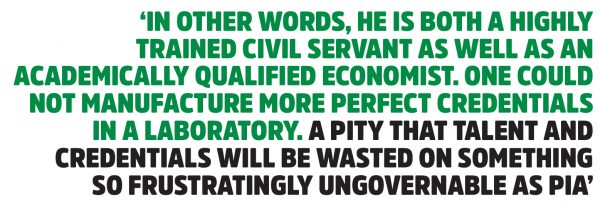
So instead, we will describe to you the challenges facing PIA, as Cyan laid them out. We will then describe to you what he thinks should be done about them, and then what he describes as the obstacles in his way, obstacles that we believe – and he almost admitted – are all but insurmountable for PIA in its current form.
(A) Great (Many) People to Sue You
On the surface, PIA looks like any other corporation. It publishes financial statements (a year late, but still), it holds shareholder meetings, has a board of directors, and is even publicly listed on the stock exchange. However, its core problem is that it does not, in reality, function like a company. Functionally, PIA is now a government department and its employees have all of the protections of a civil service job, and with precisely the same level of accountability that the rest of the civil service faces with respect to the public: asymptotically approaching zero.
As a result, PIA simultaneously has both way too many people (the kind who take home a full salary and demand benefits, but are not adding much economic value) and not enough (the kind of people who can actually do a competent job).
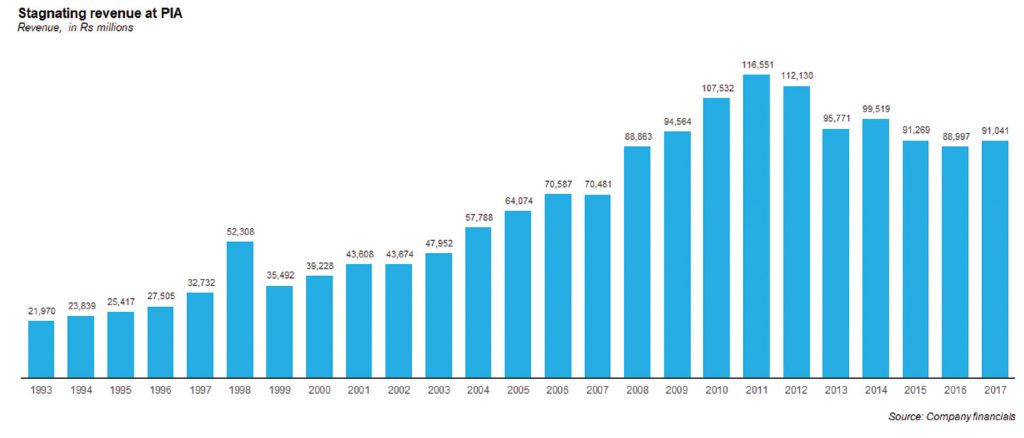
When you give people a salary that meets their financial needs, but not enough work to keep them occupied during business hours, you may have a problem on your hands.
“Human resources is the problem at PIA,” said Cyan. “For 32 aircraft, I have 13,000 people. Half of my day is spent dealing with them. The problem is severe. When I do need people, they do not possess the skills. When I go to the market to hire for those skills, I face legal challenges. Those are the two main problems. The third is discipline. For the kind of behaviour our staff routinely get away with, you would lose your job at Emirates the same day.”
That litigiousness is at the core of the problem. PIA staff may not have enough work or the skills to do the jobs that need to be done, but somehow, an alarmingly large number of them have access to lawyers, and a willingness to sue the government for just about anything that any management at the company would want to change.
So litigious is the culture at PIA that the airline was prevented by an order from no less than the Supreme Court of Pakistan to stop its rebranding exercise where they were repainting the aircraft with a new logo.
Yes, you read that correctly. For PIA, even just wanting to repaint their own aircraft is a matter that will be litigated in the highest court in the country. And they are competing in the domestic market against companies that can make decisions almost instantaneously and implement them at any pace they desire, and internationally, PIA’s biggest competitors is one of the largest airlines in the world (Emirates).
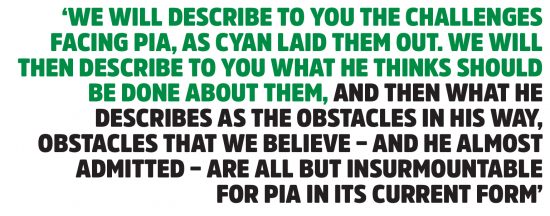
Still, have that last shred of hope? It had better be gone by now because this article only goes downhill from here.
Customer (dis)satisfaction and (lack of) employee appraisals
One of the most telling stories about PIA’s culture was the one Cyan relayed to us about how the company measures customer satisfaction.
“This happened during the first time I was leading a meeting with the various department heads,” said Cyan. “They kept saying that their performance on customer satisfaction is very good. I asked them how they measure it. They said that customer complaints have gone down. To that, I asked: have you considered the possibility that people are giving up on us and not even bothering to complain?”
Cyan has since implemented a more scientific methodology for collecting customer satisfaction data. Passengers are now selected at random on 10 flights every single day and handed a simple card on it asking them to rate their experience with PIA across a variety of metrics. The responses consist of emojis such as a smiling face, a sad face, or an angry face, and thus take very little time to fill out, increasing their response rate.
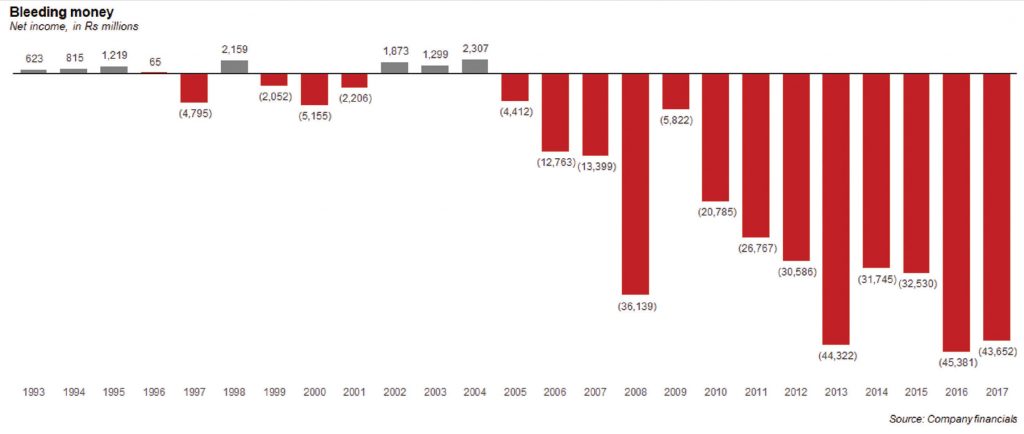
And then there is the way the organisation measures the performance of its own employees. For an airline that is bleeding money by the tens of billions on an annual basis, the staff has a very high opinion of themselves and their colleagues.
“During my first three days, I wanted to find out how the company records performance,” said Cyan. “What I found was that it was worse than nonexistent. Over 95% of the people in PIA are ranked outstanding and most have had that ranking for the past 10 consecutive years. If none of the airline’s departments are able to perform even basic functions, how is everyone ‘outstanding’?”
Cyan tried to implement a change in how performance is measured by introducing what would have been a package of both rewards and punishments for employees. Alas, he ran into that wall of litigation again.

“The moment I start implementing something, the staff will sue and get stay orders from courts,” he said. “We have a total of 1,100 cases pending in the courts.”
So instead of trying to include rewards and punishments, Cyan is trying to design a system that rewards better performance but does not create disincentives for bad performance. It is based on a theory of organisational behaviour that has been implemented at several companies around the world, most famously at Google, though it remains to be seen what, if any, improvements it brings to employee behaviour.
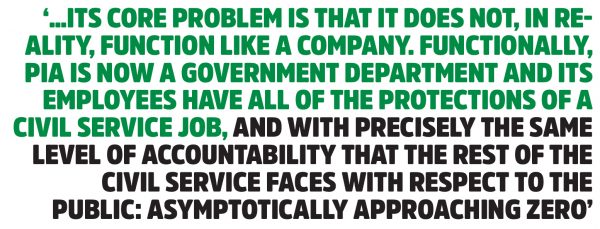
Dangerous practices in engineering
Speaking of the basics not being done right, PIA staff apparently seem to treat aircraft maintenance like it is something optional. The airline had, until recently, made it a habit to use something called “limited authorisation”, where an aircraft is inspected and found to not comply fully with international flight safety regulations, and allowed to fly anyway. Cyan has been trying to crack down on the use of limited authorisations by investing heavily in engine overhauls and aircraft repairs.
“In 2016, there were 128 limited authorisations, and that is now down to zero,” he said.
It is easy to be cavalier about aircraft maintenance, but this is something that can actually cost lives. The most famous recent example was PIA Flight 661, which was scheduled to fly from Chitral to Islamabad on December 7, 2016, but crashed near Havelian in Abbottabad. All 47 people on board, including singer-turned-preacher Junaid Jamshed, were killed.

It is a testament to the institutional sclerosis and callousness that – rather than serving as a wake-up call for having lost that many passengers and crew members – PIA still did not begin investing in aircraft maintenance until the CEO was changed the next year.
Instead, in December 2016, just a few days after the Havelian crash, PIA staff sacrificed a goat as sadqa before an Islamabad to Multan flight for good luck and a safe flight.
Think about that. Somebody actually had enough awareness to realise that the aircraft was the same model that crashed in Havelian and might be unsafe, went out to a livestock market and bought a goat, and actually took the time to slaughter a goat on the tarmac, but somehow magically did not think: “Hey, maybe we should run a safety check on this aircraft and stop flying it if it is not safe.”
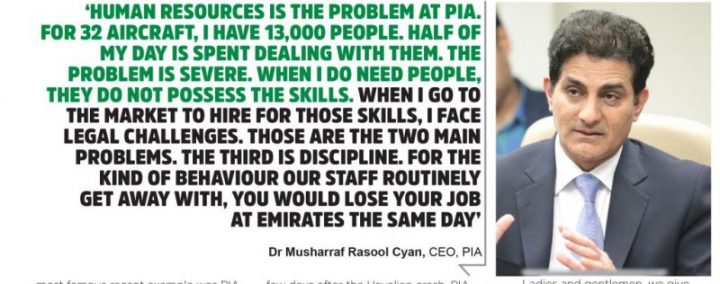
Do we even need to ask about your hope levels at this point?
The financial mess
On the financial front, let us be completely blunt: PIA is bankrupt. And no, we do not mean that as a metaphor for “not doing well these days” or “has a lot of losses”. No, we mean that this airline has absolutely no ability on its own to remain a going concern, and is only able to continue limping along because we the taxpayers are pumping in tens of billions of rupees worth of bailouts every year into the organisation, a whopping Rs318 billion over the past decade.
How do we know that PIA is not a viable business? Because it has not made a profit since 2004, and since 2009, its auditors have included a line in their audit reports every year that states that PIA is not a viable business and would collapse completely without annual government bailouts.

This is the part where most Pakistani populists get up in arms about how the organisation has “so many valuable assets” and therefore, “how can it be bankrupt”?
Because, dear geniuses, a company’s balance sheet includes both assets and liabilities. Looking at PIA’s assets without looking at its liabilities is just plain wrong.
Let us put it in plain terms. Take the PIA’s single most valuable asset: the Roosevelt Hotel in Midtown Manhattan. At the peak of the market, that hotel might have been worth about $1 billion, but under current conditions is probably worth closer to $700 million. Even if PIA were to get a $1 billion price for the hotel, that amount would cover less than one-third of PIA’s total debts.
This organisation is in deep, deep financial trouble, and its CEO knows it.
“People don’t realize that I’m actually paying over Rs4 billion every month to debt servicing. And that’s not reducing, that’s increasing,” said Cyan.
What happens next?
Shrewd readers will have noticed that, for all the major issues discussed, we laid out the CEO’s plan to tackle them for all but two problems: the inability to fire people or hold them accountable, and the massive debt problem. It just so happens that those are problems number one and two respectively for PIA in terms of their magnitude and impact on the organisation.
Cyan admits that these are problems he does not have the ability to solve and that they are – quite candidly – beyond his pay grade. The government of Pakistan (the majority owner of PIA) needs to decide whether it is willing to face the painful task of restructuring the failing asset that is PIA, and take on its powerful unions and employee lobby, or if it is willing to continue pumping in tens of billions of rupees every year to avoid the problem.
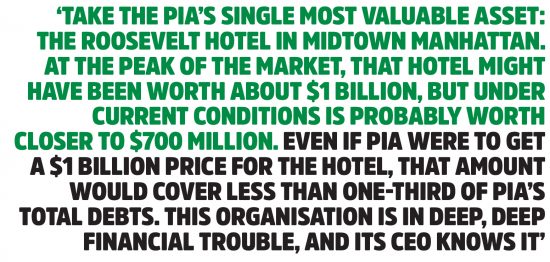
Because short of that, you can bring in all of the competent managers you want (yes, Asad Umar, we are talking directly to you right now), it will only amount to rearranging the deck chairs on the RMS Titanic.
We asked Cyan bluntly, if PIA is a lost cause without those structural reforms.
“Still hoping maybe not,” he said.
And therein lies his problem. He still has hope.


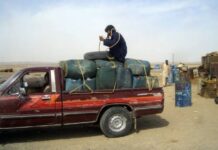


















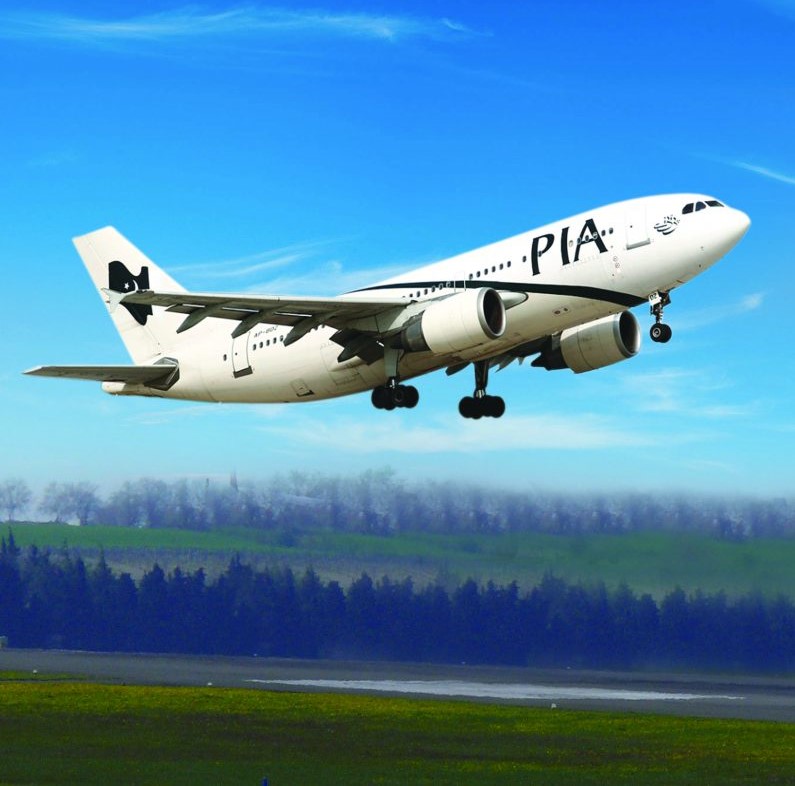
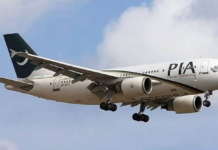
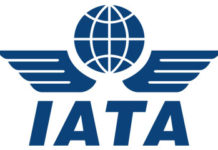

PIA Markhor livery is stupid looking, a cheap knock-off of Qatar Airways and makes PIA seem like a budget carrier, glad to know Supreme court banned it.
Hey Farooq, you’re by far my favorite analyst on business issues in Pakistan. I hope in this interview you would’ve gone more in depth about the different sectors that the employees are engaged in.
PIA has a standard plane to staff ratio for its flying related operational services. Where PIA is over-employed is in its auxiliary services like baggage handling or ground catering services. Just recalling from what I heard Asad Umar mention once :D. Would’ve been great had you quizzed the CEO more on these issues.
I agree with Dr. Cyan analysis of PIA situation. The government has to take hard decisions.
The supreme court needs to intervene and instruct lower courts to stop issuing unlimited Stay orders on every PIA decision, favoring employees.
How do you expect the CEO to take corrective decisions if the concerned staff can easily get stay order for unlimited period?
The easiest and quickest way to handle the issue is to do what MCB and UBL did about two decade back ie arrange for Rangers to be posted at the major centres post which carry out a staff cull ie get rid of the non performers as well as the corrupt employees.
My father spent close to forty years with PIA ie 1955 to 1994 helping its on its way to become a force to reckon with helping a number of airlines Singapore Airlines (PIA staff was deputed in the 70’s), Air Malta, Saudia and Emirates. My father was project Manager Engineering for Emirates and his heart bleeds to see where PIA is today as opposed to Emirates which it helped stand on it feet! He level of committment was such that he ignored a number of opportunities which came his way during his career with PIA.
The rot started with the reintroduction of unions and political appointments including reinstatement of employees who were laid off for corrupt practises during Benazir’s first government as a result the slide to mediocracy was set in motion with complete breakdown of discipline, accountability and meritocracy.
The only way to revive PIA is to privatise it and let the new owners run it like a commercial organisation as the government doesn’t have the will to fix the problems.
Sir as an professional investor, i can safely say that no sane investor would ever buy PIA. With the current structure no one will buy it even if you pay them.
The only way possible would be if the government gives golden handshakes to PIA’s excessive useless staff and take off all of PIA’s debt. Then sells ALL(not 49%) of its stake to a buyer so as to be free from political interventions as governments change. When PPP wanted to do it PML-N went against it. Then PTI went against PML-N when they tried it. So it will continue like this unless the government gets rid of this totally.
Instead of blaming others one should have the job knowledge and the airline has the potential to turn around in six months.
If you study the miseries of PIA and PSM, you will see that both of the PPP tenures played havoc with the corporations by reinstating the staff in service with back benefits. It was not only these two organisations but also many others like PTCL, banks etc. The nationaliisation policy of early seventies forcibly carried out by PPP and indiscipline introduced by ‘peaplies’ rendered irreversible damage to the very fabric of our industrial, commercial and public sectors. Trade unionism with vast powers ,protected by NIRC was the last nail in the coffin of of “ examplinary development of sixties”.
There is always a way if there is WILL both professional as well as polititical. The type of cancer that has crept into the veins of our society as a whole requires surgery of the same extent as the cancer requires. It’s not an easy job. But the treatments are there.
there is a lot to do. this could not be turned up overnight, safety is the most important aspect in aviation, the new ceo must ensure the birds which are flying are 100% perfect. safety of passengers should be top priority.
yes please alert me of all PSX listed companies individually whenever learnt about their financials.
With all due respect, Dr Cyan is a bureaucrat, and that by training will make him an ultra conservative person. I say this because I have seen how bureaucrats work. They will not touch anything that is not a threat to their own position, even if the whole house burns down. Secondly, Dr Cyan has not stake in the company, and so doesn’t need to take decisions which have a small chance of revitalizing PIA and a very large chance of destroying his career. PIA can only be turned around if it is owned by private investors, overseen by an empowered independent board, and managed by a competent executive who needs to prove his worth.
Comments are closed.